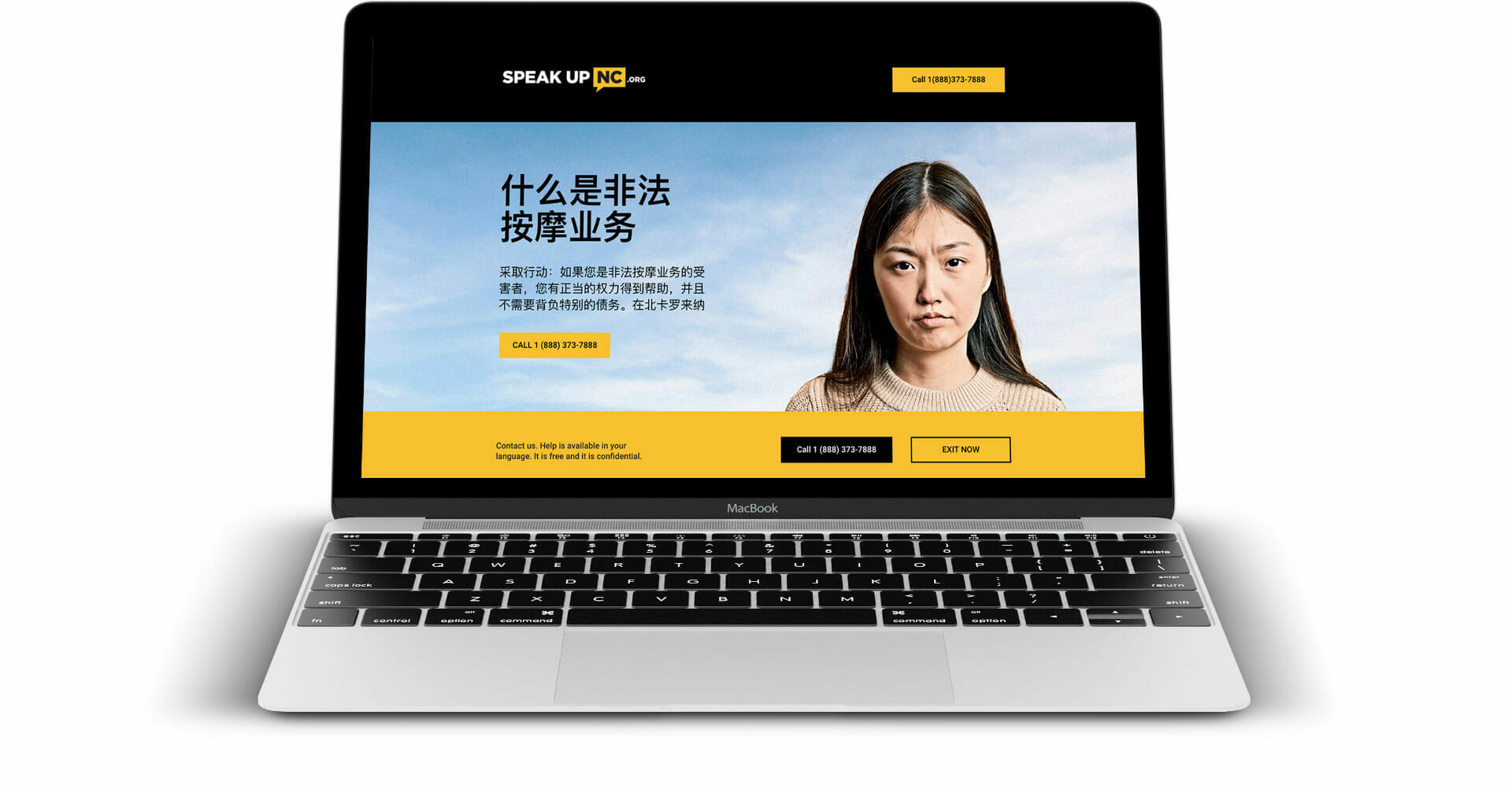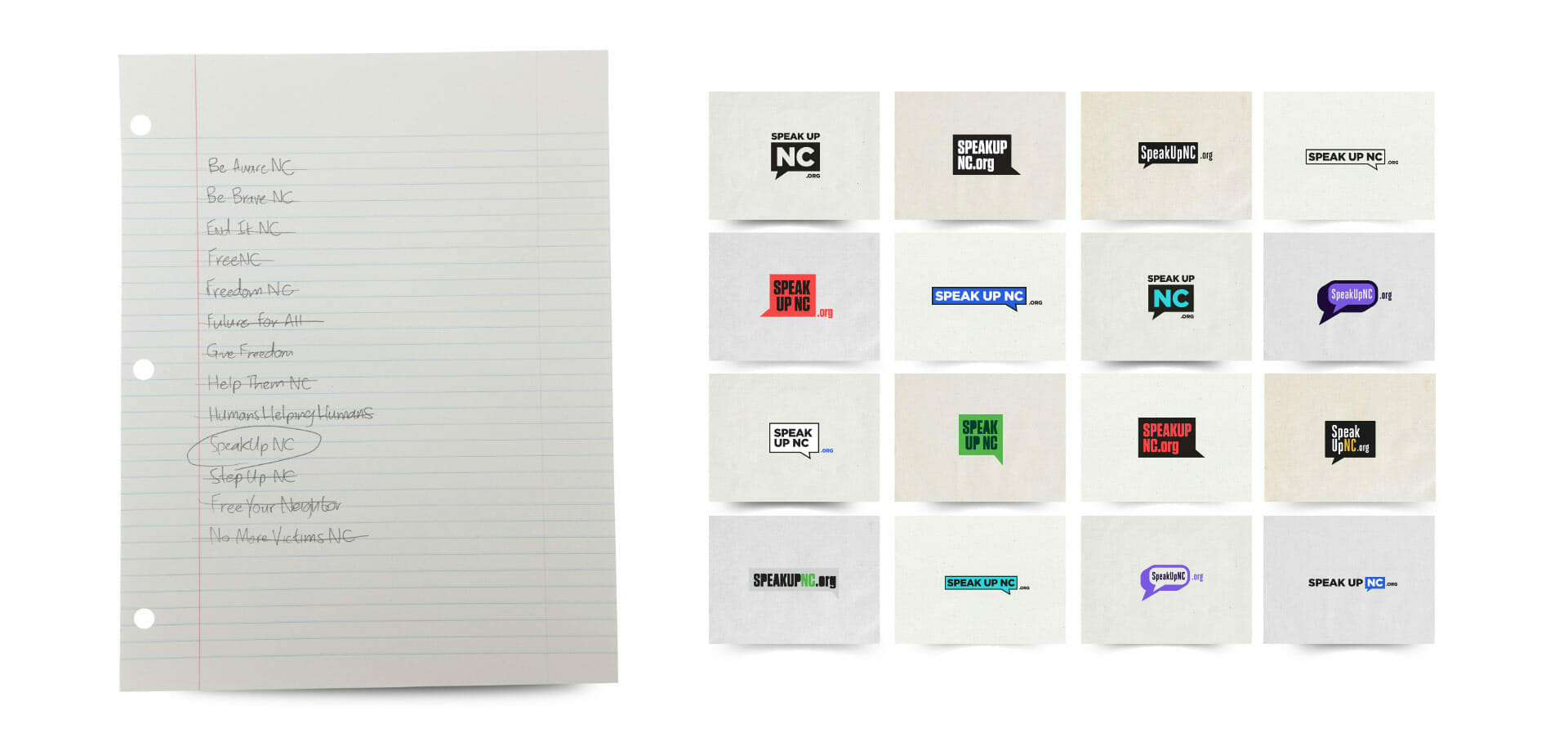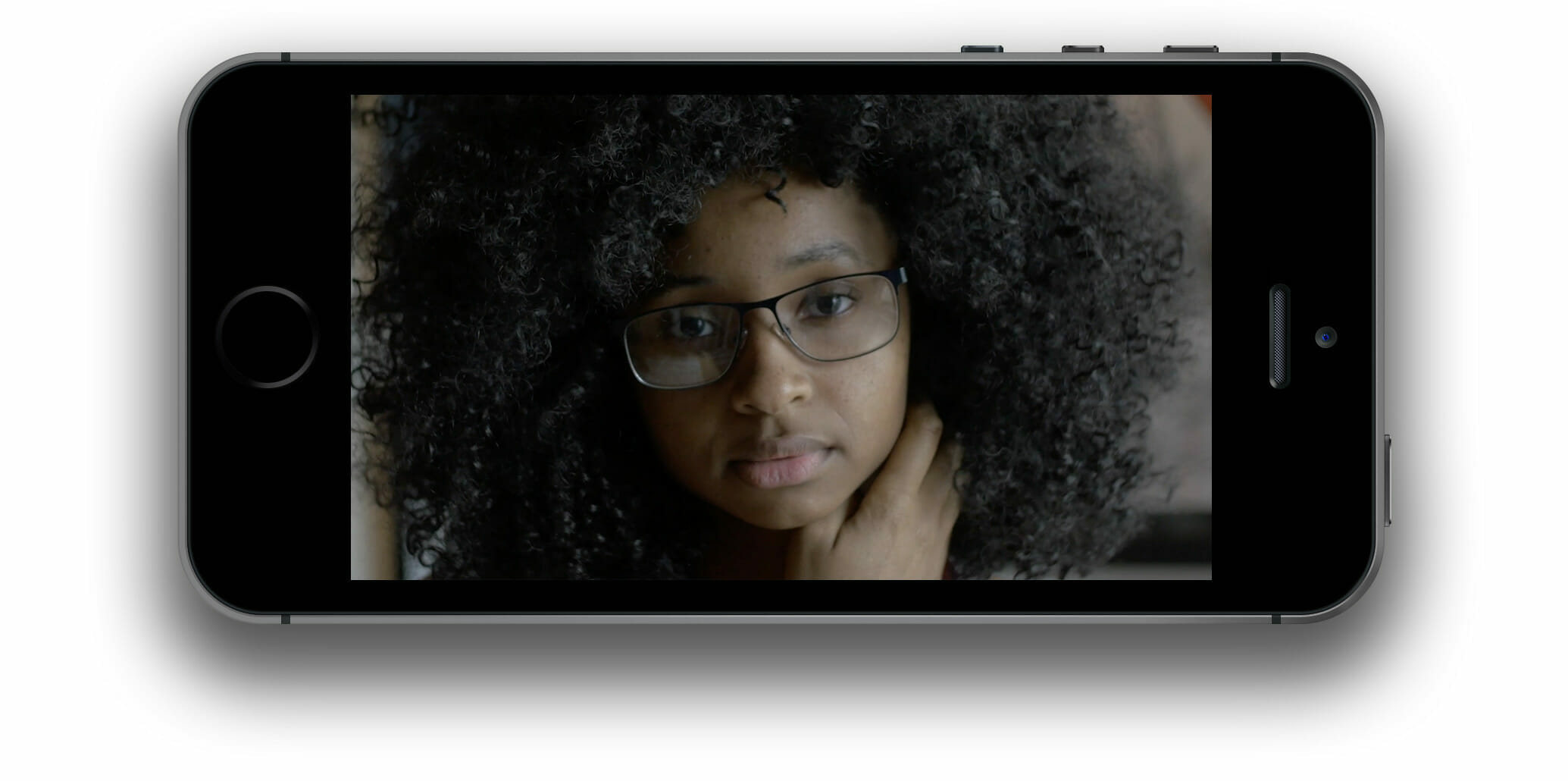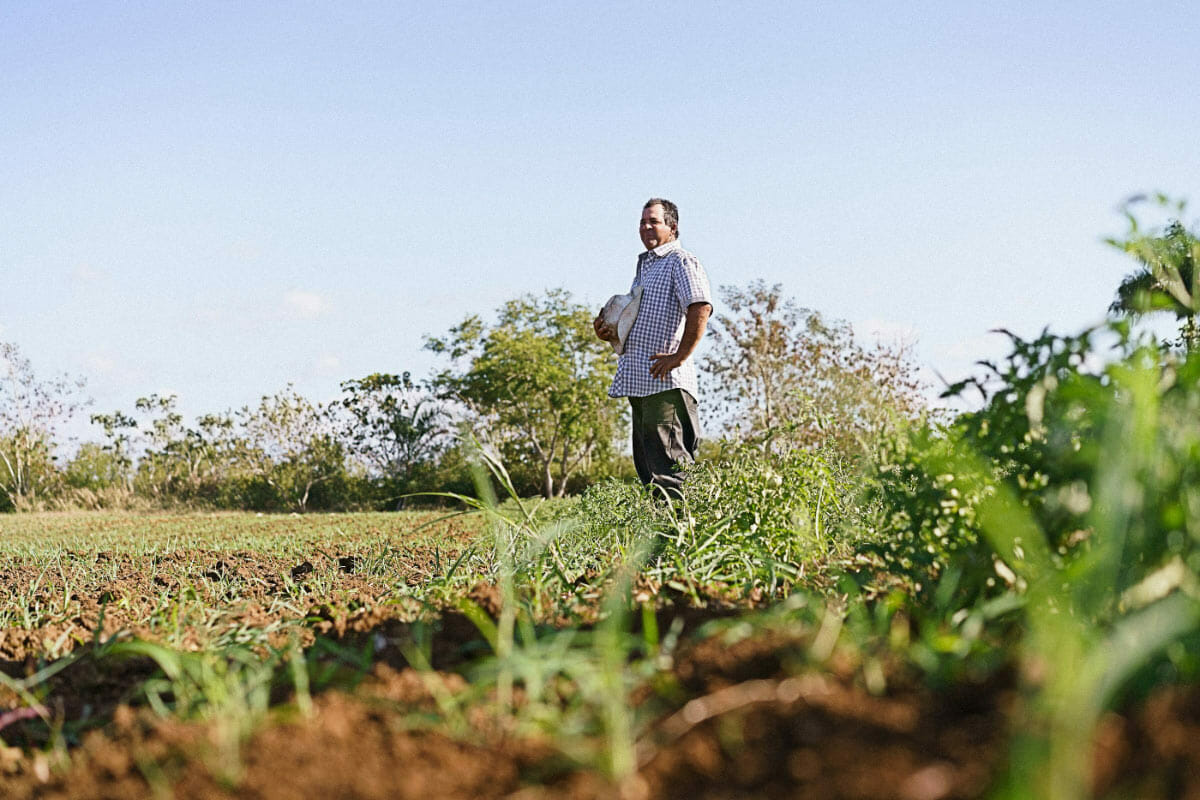SpeakUpNC.
Client: North Carolina Human Trafficking Commission
Thanks to some successful collaborations over the years, the North Carolina Human Trafficking Commission entrusted us to create a new statewide human trafficking awareness and prevention campaign.
Their organization exists to examine and combat human trafficking in North Carolina. They needed a campaign to dispel some common myths, and show what current human trafficking actually looks like. They wanted to reach victims as well as educate the public on how to spot human trafficking.


The process.
We always begin projects with the end result in mind. It’s not about what we need to make, it’s about what problem we need to help our client solve.
Some discovery sessions with key stakeholders revealed the challenge of getting people to understand what human trafficking is and is not. It is very common, but less sensational and different from what people typically imagine.
We also began to discuss what the target market was, and what forms of outreach would get the message delivered in the most impactful way possible.
After the discovery phase, we brainstormed names and brand identity marks. We typically vet names with URL availability, and test brand identities on various mediums and screen sizes so we can help the client make a decision that will be most successful in achieving their goals.

The deliverables.
1) Brand Identity
The client settled on “SpeakUpNC.” It is always their choice, but we speak up to help them consider all factors before making their choice. SpeakUpNC was short, memorable, and broad enough to suit current and future campaigns.
2) Website Design
When it came time to build the website, we have already created a library of images to pull from that captured the human side of human trafficking. Images of real people and faces covering the spectrum of genders and races typically involved in North Carolina’s human trafficking scene.
We built a series of landing pages that a wide range of banner ads would point people to depending on their need. We created pages in multiple languages, and created escape buttons on each page, so if a victim was on the site and needed to exit quickly, a button clip would send them directly to the WRAL weather page.


3) Video Production
We created a series of videos where we brought in experts from all across North Carolina to our studios and asked them a series of questions about their knowledge and role in preventing human trafficking.
We also set out all across North Carolina to capture general shots that would play a roll in our videos. We had some people role play certain scenarios as real victims would be uncomfortable reliving traumatic situations, or showing their face on screen.
4) Ad Campaign
We created a large amount of banner ad sets and ran them on various platforms and mediums throughout the state. All linked to a corresponding landing page. We also created preroll video spots that led people to the main SpeakUpNC website. Doing so not only cast a wide exposure net, it also gave us the ability to track and measure ad effectiveness and make any pivots along the way to make sure the right messages were reaching the right people.


The results.
The SpeakUpNC campaign was very successful. The campaign drove 30,124 page views in the first month alone. We constantly tripled and quadrupled the average display advertising click through rate. Compared to a national average time of less than 15 seconds on a website, the average user time on SpeakUpNC was above three minutes on most landing pages, more than 12X the norm. Lastly, and perhaps most importantly, in addition to giving victims the necessary education to self-identify and ultimately reach out for assistance, the SpeakUpNC campaign wanted to equip all North Carolinians with insights and tools to identify and report human trafficking activity. This is measured through a Tips Hotline, and total tips increased by nearly 200% from the same months in the previous year.
The SpeakUpNC campaign was not only effective in it’s launch, but we helped build a brand that will stay relevant, adaptive to various mediums, and easy to remember for future outreach initiatives.
